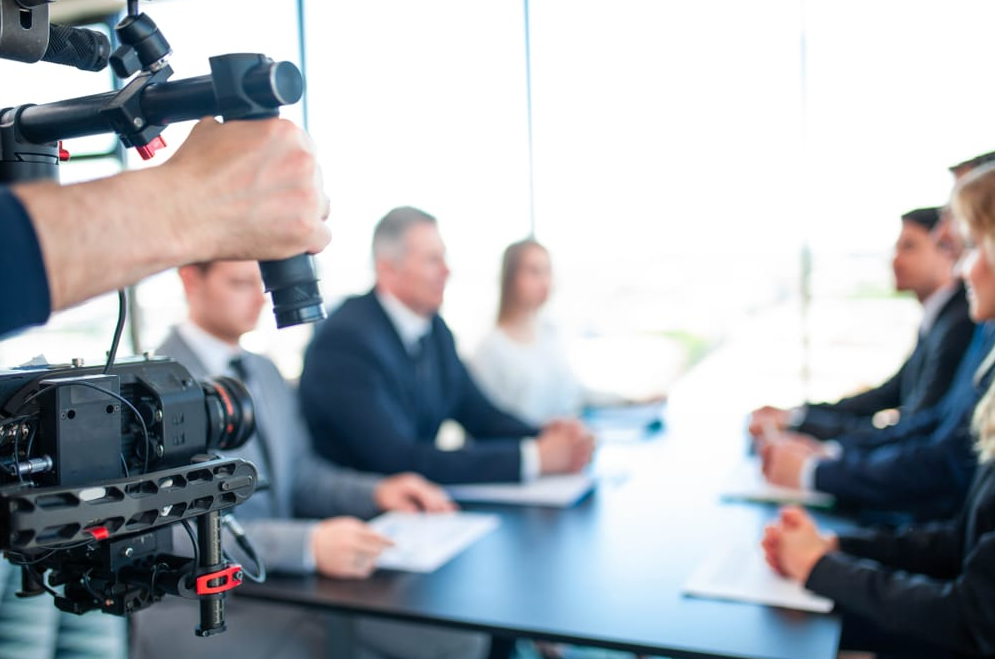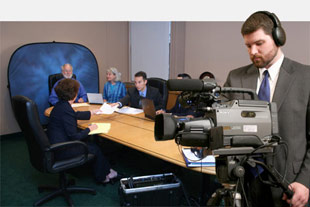How to Pick the Best Legal Videography Service for Your Needs
How to Pick the Best Legal Videography Service for Your Needs
Blog Article
Looking Into the Mechanisms of Lawful Videography: Unveiling Its Procedure in Safeguarding Authentic Visual Testimony for Judicial Proceedings
In the realm of judicial proceedings, the function of lawful videography stands as a foundation in maintaining and providing visual evidence. As innovation remains to advancement, the systems behind legal videography have actually ended up being progressively elaborate, providing an essential layer of credibility to testimonies captured on video clip. By delving right into the operational details of lawful videography, one can reveal the meticulous processes that safeguard the honesty of aesthetic evidence presented in courtrooms - Legal Videography. This expedition not just loses light on the historical evolution of lawful videography however also hints at the future trends that might better reinvent how visual testimonies are promoted in the realm of justice.
Historical Evolution of Legal Videography
Checking out the historic progression of lawful videography exposes a substantial transformation in the catching and presentation of aesthetic proof within the legal landscape. In the past, legal procedures heavily counted on created photos and records to record occasions and provide evidence. Nevertheless, with the advent of video innovation, the legal sector witnessed a paradigm shift in how visual testimony was captured and offered.
The evolution of legal videography can be mapped back to the late 20th century when developments in video clip recording equipment made it more available for use in court rooms. This technical advancement not only improved the precision and reliability of aesthetic evidence yet additionally revolutionized the means cases existed to judges and juries (Legal Videography). Attorneys started to identify the persuasive power of video clip recordings in sharing emotions, subtleties, and non-verbal signs that written records or photographs alone can not capture effectively

Technology Improvements in Video Clip Paperwork
What essential technical advancements have reinvented video clip documents in the lawful area? The lawful field has seen considerable innovations in video clip documents innovation that have boosted the authenticity and reliability of aesthetic evidence in judicial proceedings. One of the vital improvements is high-def (HD) video clip recording abilities, which provide crystal-clear images and sharp information that are important for accurately recording testaments, face expressions, and other visual signs. In addition, the integration of timestamping and metadata attributes in video paperwork tools has actually made it possible for exact paperwork of when and where the video was tape-recorded, making sure the honesty of the evidence offered in court.
Additionally, developments in video encryption and watermarking modern technologies have boosted the safety and security and tamper-proof nature of video proof, safeguarding it versus unapproved changes or tampering. Moreover, the advent of cloud storage space remedies and remote access capacities has streamlined the storage, retrieval, and sharing of video clip proof, promoting seamless collaboration among legal professionals and ensuring efficient accessibility to crucial visual statements when required. These technological improvements in video clip documents have actually certainly changed the legal field, enhancing the precision, credibility, and admissibility of visual proof in judicial procedures.
Function of Legal Videographers in Court Settings
The development of video clip paperwork technology in the legal area has actually demanded a crucial duty for legal videographers over here in courtroom setups, ensuring the honesty and dependability of visual testaments offered throughout judicial procedures. Legal videographers play a basic function in catching and maintaining accurate aesthetic evidence that can be pivotal in court cases. Their responsibility encompasses establishing tools, videotaping procedures, and generating high-grade videos that accurately show the occasions in the court.
Furthermore, lawful videographers typically work very closely with legal teams to ensure that the video clip proof straightens with the situation's demands and can be successfully offered in court to support the lawful arguments being made. Generally, the function of legal videographers in courtroom settings is vital in upholding the principles of justice and ensuring the openness of lawful process. Legal Videography.

Ensuring Admissibility and Stability of Video Clip Proof
To preserve the reliability of aesthetic proof presented in legal proceedings, making sure the admissibility and integrity of video evidence is a critical duty for lawful videographers. Admissibility refers to the acceptance of evidence by the court, and for video proof to be admissible, it needs to meet certain criteria. Legal videographers play a crucial duty in guaranteeing that the video clips they capture abide by the policies of redirected here proof, such as relevance, authenticity, and reliability.
Honesty of video clip evidence includes maintaining the creativity and accuracy of the video from the time it is taped till it exists in court. This includes firmly storing the video data, recording the chain of wardship, and protecting against any kind of tampering or modifications. Lawful videographers should adhere to strict procedures to ensure the stability of the video clip proof and avoid any kind of obstacles to its credibility.
Future Trends in Legal Videography
Given the enhancing reliance on innovation in legal proceedings, lawful videographers are poised to embrace innovative innovations forming the future of aesthetic testimony capture and presentation. One of the noticeable patterns coming up is the combination of online fact (VIRTUAL REALITY) and enhanced fact (AR) modern technologies right into legal videography. These modern technologies have the prospective to reinvent just how aesthetic evidence is provided in courtrooms, permitting courts and judges to submerse themselves in the scene of the criminal offense or incident.
In addition, making use of artificial knowledge (AI) formulas for video evaluation is anticipated to streamline the procedure of evaluating and analyzing big quantities of video footage. AI can help in determining crucial minutes, anomalies, and patterns within video clips, enhancing the performance of lawful investigations.

Final Thought
Finally, lawful videography has played a vital role in providing authentic aesthetic evidence for judicial procedures. With technological advancements and the knowledge of lawful videographers, the honesty and admissibility of video clip evidence are made sure in court room settings. As legal videography remains to advance, it will be necessary to support standards that browse around this web-site preserve the precision and dependability of aesthetic testimony for the future of lawful process.
Analyzing the historic development of lawful videography discloses a substantial change in the recording and discussion of visual proof within the legal landscape.The development of video clip documentation innovation in the legal field has required a vital role for legal videographers in court room setups, guaranteeing the stability and dependability of aesthetic testimonies provided throughout judicial process. In addition, lawful videographers usually work closely with legal teams to make sure that the video evidence aligns with the situation's demands and can be effectively provided in court to sustain the lawful disagreements being made.To preserve the credibility of aesthetic evidence presented in legal proceedings, making sure the admissibility and stability of video clip evidence is a critical duty for lawful videographers. As lawful videography proceeds to advance, it will certainly be important to maintain requirements that preserve the accuracy and reliability of visual testimony for the future of legal proceedings.
Report this page